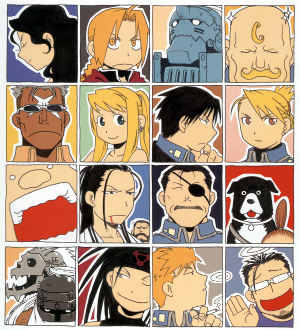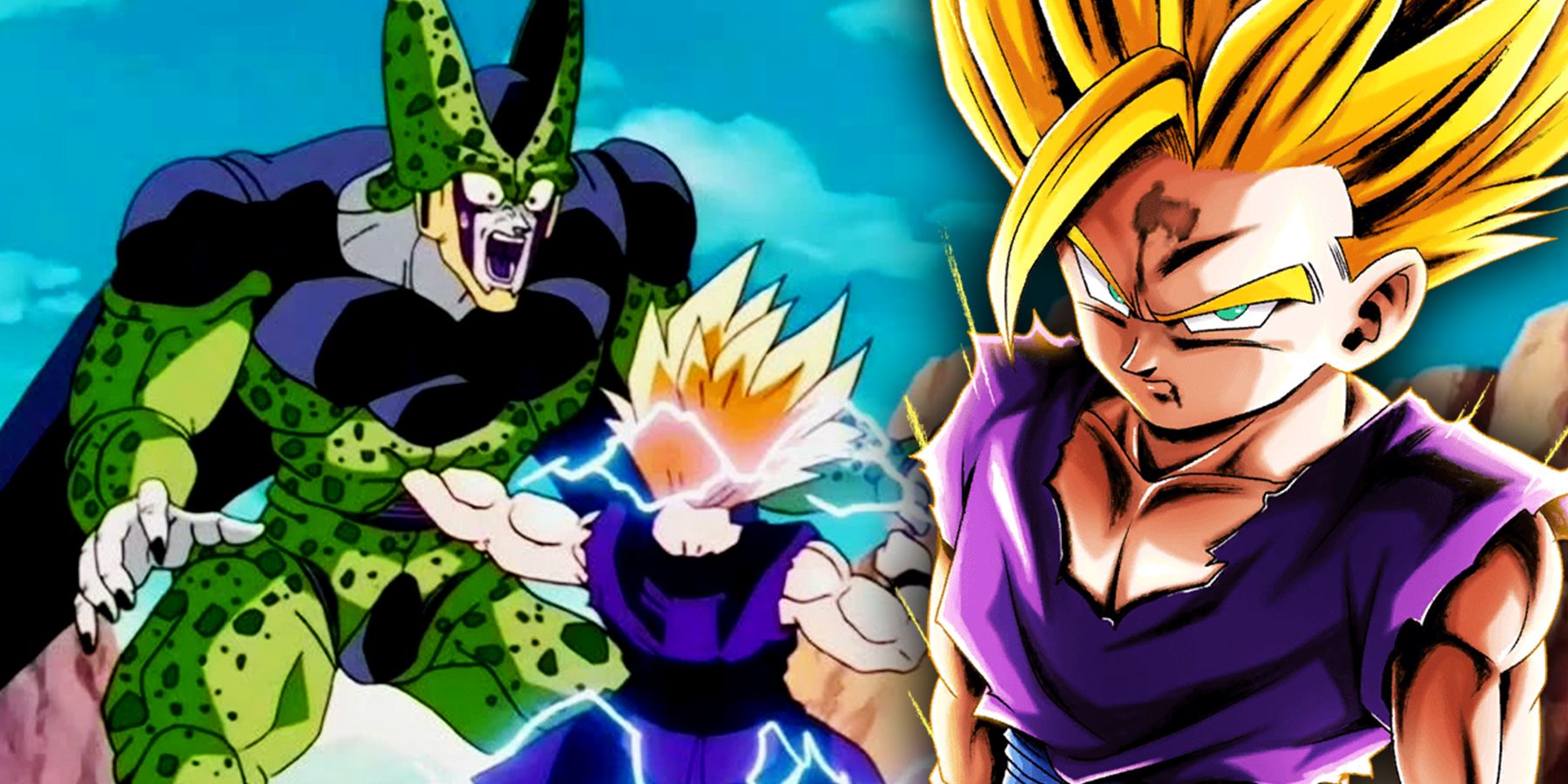The Political Dynamics of 'Fullmetal Alchemist' Seen Through Scar's Character
A Closer Look into Scar's Story, as a Reflection of the Political Dynamics of Fullmetal Alchemist
Scar is one of the most iconic and memorable characters from the hit anime, Fullmetal Alchemist. Not only is he an incredible warrior, but his complex backstory is a window into the greater political climate of the show's world.
At the very heart of Scar's story, is a message about the messy, and often unjust political dynamics of war. Scar is a victim of an oppressive military regime, one that seeks to impose its will on weaker nations; seeking to control their resources and manipulate their citizens.
While this is certainly Scar's greatest source of pain, it is also what leads to his redemption. As a former soldier of the oppressive regime, Scar is motivated to pursue justice and protect those that have been wronged by its oppressive nature. In doing so, he hopes to make the world a better place.
Scar's story also reflects the way in which power and privilege intersect with our views of justice. While Scar is certainly a powerful fighter, he is also a marginalized figure due to his ethnicity and origin. As a result, his goals and actions are seen as noble, yet dangerous - as they could potentially threaten the status quo.
In essence, Scar's story is a reflection of the current political situation in our world; a reminder that those who seek to make a difference in the world, often face adversity and opposition. Scar's story is a testament to the fact that it is possible to stand up for what is right, no matter how difficult the challenge might be.
Another Dimension: Modeling Strategies for Winning the War

Winning the War with Strategic Dimension Modeling
The war against enemies, whatever they may be, can seem daunting and nearly impossible to win. Thankfully, with the use of strategic dimension modeling, it’s easier than ever to turn the tables. Dimension modeling is a type of analytical tool designed to help you understand the various layers of your battle, breaking down complex datasets and processes into their core components for easier viewing and analysis. By understanding the dynamics and relationships between data points, it’s easier to identify patterns and make actionable discoveries that inform your strategies for winning the war.
Although traditional dimension modeling uses single dimensional structures for visualization, two-dimensional matrices offer a huge advantage in the scope of strategic analysis. Through careful construction of these models, you can identify trends, relationships, and strategies that can help you anticipate and plan for battle success. Not only can they help you gain insight into your own strategies and plans, but they’re also useful to identify the strategies of your enemies. This can allow you to anticipate their plans and make countermeasures.
Analyzing Maps and Structures
By breaking down your targets and enemies into their component elements, you’ll be able to gain more insight into their structuring and the connectedness of the components. This kind of visualization can help you anticipate enemy strategies and come up with strong countermeasures. Using two-dimensional matrices, you can map out elements such as objectives, plans, and goals that are spread across your battlefield. By mapping out the related components, you can identify relationships and connections that indicate patterns in enemy strategies and movements.
Gaining Tactical Insight
Strategic dimension modeling can also help you gain insight into other tactical aspects of your enemy’s plans, such as the resources and supplies they can leverage in any given conflict. This type of insight can help you understand the importance of certain objectives and supply routes. By seeing where supplies or resources are located, you can anticipate enemy strategies and tactics, giving you a leg up in any face-off.
Using Accurate Data
In order to accurately learn and understand your enemy’s strategies and plans, your strategic dimension model must be based on real and reliable data. This data should include components such as enemy locations, objectives, supplies, movement patterns, and technology. Collecting this information can be tricky, but it’s ultimately worth it in the long run. By having this accurate information, you can make better decisions and form more effective tactics than ever before.
Conclusion
Strategic dimension modeling can be an invaluable tool when it comes to understanding your enemies’ plans and strategies, and winning the war. By breaking your plans and processes into component elements and mapping them out in two-dimensional matrices, you can gain valuable insight into their structuring and planning. Then, by using reliable data to inform your tactical decisions, you can anticipate enemy strategies and form countermeasures that will increase your chances of winning.
The Ethics of War: Fighting for a Better Future

The Dilemma of War
The last century has seen its fair share of battles, wars, and heartache. War brings destruction in its wake, but scientific and technological advances can also build a better future. But can these advances be ethically justified in the face of war?
Fighting for the Right Reasons
When deciding to go to war, one must consider the delicate balance between ethical considerations and the desire to protect one's homeland and way of life. For instance, defensive war is well-accepted, as is the concept of using military might in event of a health or humanitarian crisis.
However, there are a multitude of other, more complex scenarios in which questions of morality and ethics come into play. For instance, when fighting against a powerful enemy, it can be difficult to determine whether the fight is justifiable or motivated by national pride or bitter rivalry. Similarly, the morality of using new weapons and military tactics can be precarious and always subject to debate.
The Aftermath
In addition to these moral questions, the consequences of war cannot be overlooked. Regardless of the intentions of any given war, the devastating physical and psychological effects can be long-lasting.
Even in instances where war achieves objectives, such as stopping a dictatorship, the effects of war do not always translate into a better future. The effects of destruction on infrastructure, resources, morale, and the environment can take years, even decades, to repair fully.
The Climb to Victory
Although it is sometimes difficult to gauge the morality of war, it is important to consider the potential for a better future. By strategically and prudently using the military as a tool for progress, it is possible to bring about a brighter tomorrow.
The process towards a better future must be collaborative. All parties involved in a conflict should strive to reach an understanding and a lasting peace. In this way, war can be a tool to build bridges, rather than burn them.
The Battle is Within
Ultimately, it is up to each individual to decide whether to go to war or to stay away from it. In order to make an informed decision, each person must contemplate and assess the personal and ethical ramifications of war.
The moral decisions we make and the judgements we pass when faced with war have long-term implications for us and the generations to come. If we make the right choices, then we can fight for a better future and gain a peaceful victory.
About
Welcome to JinnJot.com, your go-to hub for a wide range of captivating blogs! Whether you're curious about the latest in finance, fascinated by geology, pondering deep philosophical questions, or just want to explore the realms of religion, culture, sports, and entertainment, JinnJot has it all. It's a vibrant space where ideas come to life, and every topic is an adventure. Dive in, discover something new, and join the conversation—because at JinnJot.com, there's always more to explore!
-Djinn





